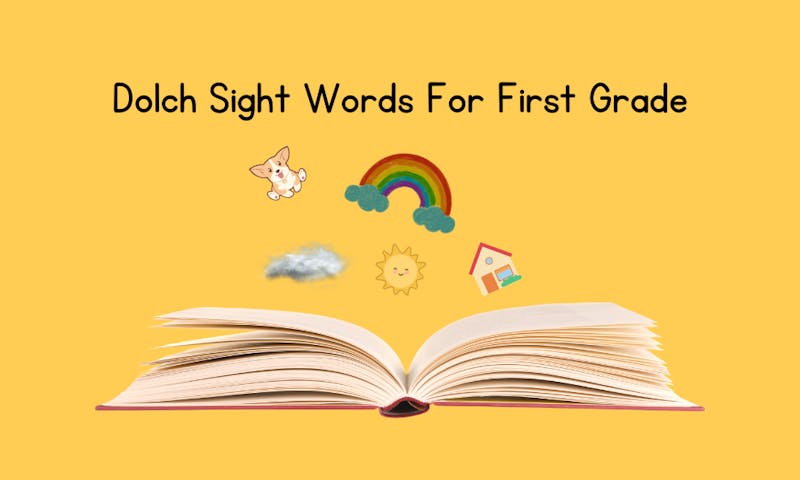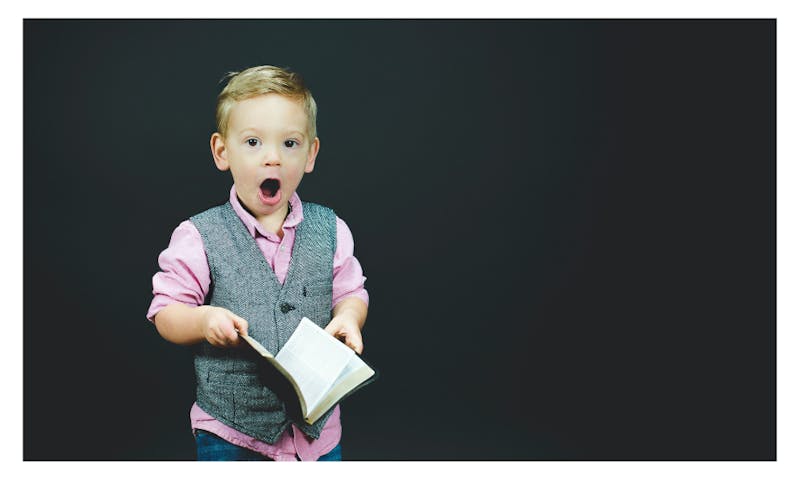More content
We all know that being able to read is important, but where do we start? First grade sight words! Sight words in first grade appear frequently in the English Language. They are words like it, are, and, the, an, her, etc., and are very commonly used in literature, poetry, and informational texts. Sight words in the first grade are:
- The first step to reading comprehension.
- Reading fluency.
- Proficiency in language skills for early readers.
Sight words or sight vocabulary are words that kids begin to recognize by sight before they learn about phoneme blends and phonics. So, sight words are hugely important for creating proficient and fluent children. But how do we help our children learn sight words in the first grade? Carry on reading, and we'll give you some first-grade Dolch sight words, common core early reader sight words, plenty of tips and tricks, and meaningful, fun activities to encourage your readers on their reading journeys!
First-Grade Dolch Sight Words List
By teaching first-grade sight words to kids, we allow them to discover new sets of words, improve their vocabulary, and develop their communication skills. The Dolch first-grade sight lists are common words created by Edward William Dolch in 1936 that frequently appeared in children's books at the time, and now they are used to teach first-grade readers high-frequency words without forced memorization. You can use this sight word list for first graders in many ways, so check out our fun game and activity ideas to inspire and engage your children's vocabulary development. We also have an interactive page full of flashcards and drag-and-drop games to try.
According to Dolch, here are some of the most common first-grade sight words.
| after | walk | again |
| just | the | said |
| of | an | any |
| know | were | then |
| when | stop | some |
| every | his | her |
| him | how | when |
| think | live | once |
| from | take | many |
| fly | as | give |
| thank | how | yes |
| over | open | ask |
| old | round | may |
High-Frequency Colors For First Graders
Here is a list of common colors for first graders to help them read and identify colors.
| white | red | blue |
| purple | green | yellow |
| orange | pink | black |
Early Reader Dolch Sight Word Example Sentences
Not sure how to help children learn sight words with simple sentences? Here are some simple sentences using Dolch sight words suitable for first-grade learners. You can use them in small reading groups or at home to improve your children's sight word fluency.
- He likes every cookie in the bakery.
- Take some cookies.
- Thank you.
- The old man jumps over the flowers.
- Open the door.
Flip the flashcard for more example sentences using the first-grade Dolch sight words.
Common Core Standards Early Reader: Sight Word List
The other word list to familiarize yourself with is the updated Common Core Standards sight word list. These are high-frequency words that children will see in newspapers, books, online, and in articles and help children achieve the CCSS RF.1.3a, CCSS RF.1.3b, and CCSS RF.1.3c. They are also a more modern and updated version of the Dolch and Fry first-grade sight word lists and adhere to the common core standards. They use a combination of Dolch and Fry word lists, but be aware that different states use slightly different state curricula, so check first. Here are some examples.
| old | by | after |
| going | stop | may |
| fly | round | children |
| walk | again | thank |
| would | sheep | farmer |
| letter | box | open |
| feet | shoe | time |
| flower | very | bird |
3 Tips To Make Learning Sight Words Easier For Your First Grader
Learning to read is an important life skill, and starting early with word recognition through high-frequency words for first graders will help their reading fluency and comprehension in the long term. Sight word lists are also a great resource to have on hand for struggling readers, foreign language learners, and English as additional language learners. Mastering them and building proficient children can be difficult, though, especially if your child or student lacks confidence, so here are some tips.
- Focus only on a few first-grade sight words at a time. This isn't a sprint; it's a long marathon. Children need to build up their confidence with time. If you see them struggling, go over them again with additional activities.
- Have anchor charts dotted around the classroom in sight, or make anchor charts with your kids at home. Anchor charts are a great resource to have on hand because they're often colorful and only contain important information. Choose a sight first-grade word of the week and place it where the children can see and easily access it.
- Read. Now, we know this might sound obvious, but reading to your kids or students and modeling good reading behavior while pointing out high-frequency words is important and exposes children to them far quicker than learning a bunch of lists. Try to start with books containing sight words for the grade; one example would be Dr. Suess's books, as almost all of them contain sight words. Like the Cat In The Hat, which contains almost exclusively Dolch words, or Brown Bear, Brown Bear What Do You See? Authored by Bill Martin Jr and illustrated by Eric Carle.
FAQs - First-Grade Sight Words
Check out our frequently asked questions regarding sight words for first graders.
What are sight words?
Why are sight words important to learn?
When should you start teaching sight words?
What are the differences between sight words and phonics?
Which comes first, sight words or phonics?
How many sight words should a first-grader know?

